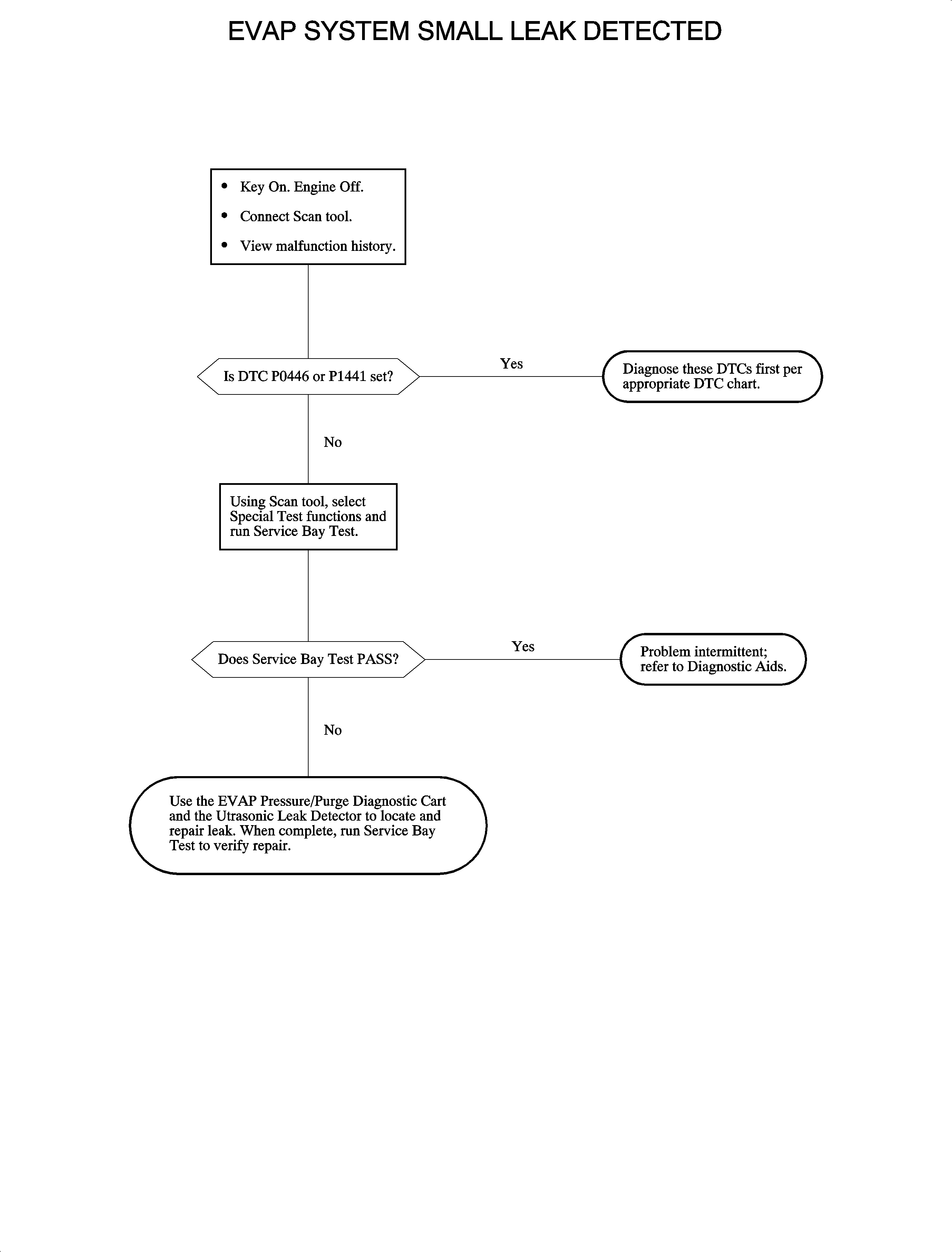Circuit Description
The evaporative emission system is tested with on-board diagnostics by applying
pressure, vacuum, to the system and monitoring pressure decay. The PCM monitors the
vacuum level through the fuel tank pressure sensor. At the appropriate time, the vent
solenoid is commanded closed and the canister purge solenoid is commanded to a fixed
duty cycle, allowing the engine to draw a vacuum on the entire evaporative emission
system. After a calibrated vacuum level is achieved, the EVAP canister purge valve
is turned OFF, sealing the system. A leak is detected by monitoring for a decrease
in vacuum level over a calibrated period of time, while keeping all other variables
constant.
Conditions for Setting the DTC
| • | The barometric pressure is greater than 80.0 kPa. |
| • | Both the ECT and IAT is between 5-32°C (41-90°F) at
engine start up. |
| • | The IAT and ECT are within 10 degrees of each other at start up. |
| • | The fuel tank level is between 15-85 percent. |
| • | The engine run time is greater than 2 seconds. |
| • | DTCs P0105, P0107, P0108, P0112, P0113, P0117, P0118, P0125, P0452, P0453,
and P0500 are not set. |
| • | A vacuum decay slope is greater than a calibrated amount during the test.
The decay slope is proportional to the fuel level. |
Diagnostic Aids
Check for the following conditions:
| • | Missing or leaking O-rings at the fuel vapor line connections or fuel
sender |
| • | A cracked or damaged EVAP canister |
| • | A damaged source vacuum line, EVAP purge line, EVAP vent hose, or fuel
tank vapor line |
| • | A leaking fuel tank or filler neck |
| • | Use the EVAP pressure/purge diagnostic cart and the ultrasonic leak detector
to locate the leak. |


